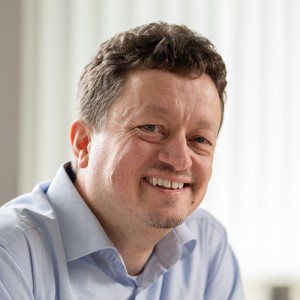
Toward high-fidelity quantum information processing and quantum simulation with spin qubits and phonons
I. Arrazola, Y. Minoguchi, M. A. Lemonde, A. Sipahigil, P. Rabl
Physical Review B 110 (4), 45419 (2024).
We analyze the implementation of high-fidelity, phonon-mediated gate operations and quantum simulation schemes for spin qubits associated with silicon vacancy centers in diamond. Specifically, we show how the application of continuous dynamical decoupling techniques can substantially boost the coherence of the qubit states while increasing at the same time the variety of effective spin models that can be implemented in this way. Based on realistic models and detailed numerical simulations, we demonstrate that this decoupling technique can suppress gate errors by more than two orders of magnitude and enable gate infidelities below similar to 10 - 4 for experimentally relevant noise parameters. Therefore, when generalized to phononic lattices with arrays of implanted defect centers, this approach offers a realistic path toward moderate- and large-scale quantum devices with spins and phonons at a level of control that is competitive with other leading quantum-technology platforms.

The bosonic skin effect: Boundary condensation in asymmetric transport
L. Garbe, Y. Minoguchi, J. Huber, P. Rabl
Scipost Physics 16 (1), 29 (2024).
We study the incoherent transport of bosonic particles through a one dimensional lattice with different left and right hopping rates, as modelled by the asymmetric simple inclusion process (ASIP). Specifically, we show that as the current passing through this system increases, a transition occurs, which is signified by the appearance of a characteristic zigzag pattern in the stationary density profile near the boundary. In this highly unusual transport phase, the local particle distribution alternates on every site between a thermal distribution and a Bose-condensed state with broken U(1)-symmetry. Furthermore, we show that the onset of this phase is closely related to the so-called non-Hermitian skin effect and coincides with an exceptional point in the spectrum of density fluctuations. Therefore, this effect establishes a direct connection between quantum transport, non-equilibrium condensation phenomena and non-Hermitian topology, which can be probed in cold-atom experiments or in systems with long-lived photonic, polaritonic and plasmonic excitations.

Autonomous Distribution of Programmable Multiqubit Entanglement in a Dual-Rail Quantum Network
J. Agustí, X. H. H. Zhang, Y. Minoguchi, P. Rabl
Physical Review Letters 131 (25), 250801 (2023).
We propose and analyze a scalable and fully autonomous scheme for preparing spatially distributed multiqubit entangled states in a dual-rail waveguide QED setup. In this approach, arrays of qubits located along two separated waveguides are illuminated by correlated photons from the output of a nondegenerate parametric amplifier. These photons drive the qubits into different classes of pure entangled steady states, for which the degree of multipartite entanglement can be conveniently adjusted by the chosen pattern of local qubit-photon detunings. Numerical simulations for moderate-sized networks show that the preparation time for these complex multiqubit states increases at most linearly with the system size and that one may benefit from an additional speedup in the limit of a large amplifier bandwidth. Therefore, this scheme offers an intriguing new route for distributing ready-to-use multipartite entangled states across large quantum networks, without requiring any precise pulse control and relying on a single Gaussian entanglement source only.

Chiral Quantum Optics in the Bulk of Photonic Quantum Hall Systems
D. De Bernardis, F. S. Piccioli, P. Rabl, I. Carusotto
Prx Quantum 4 (3), 30306 (2023).
We study light-matter interactions in the bulk of a two-dimensional photonic lattice system, where photons are subject to the combined effect of a synthetic magnetic field and an orthogonal synthetic electric field. In this configuration, chiral waveguide modes appear in the bulk region of the lattice, in direct analogy to transverse Hall currents in electronic systems. By evaluating the non-Markovian dynamics of emitters that are coupled to those modes, we identify critical coupling conditions, under which the shape of the spontaneously emitted photons becomes almost fully symmetric. Combined with a directional, dispersionless propagation, this property enables a complete reabsorption of the photon by another distant emitter, without relying on any time-dependent control. We show that this mechanism can be generalized to arbitrary in-plane synthetic potentials, thereby enabling flexible realizations of reconfigurable networks of quantum emitters with arbitrary chiral connectivity.

Can We Observe Nonperturbative Vacuum Shifts in Cavity QED?
R. Sáez-Blázquez, D. de Bernardis, J. Feist, P. Rabl
Physical Review Letters 131 (1), 13602 (2023).
We address the fundamental question of whether or not it is possible to achieve conditions under which the coupling of a single dipole to a strongly confined electromagnetic vacuum can result in nonperturbative corrections to the dipole's ground state. To do so we consider two simplified, but otherwise rather generic cavity QED setups, which allow us to derive analytic expressions for the total ground-state energy and to distinguish explicitly between purely electrostatic and genuine vacuum-induced contributions. Importantly, this derivation takes the full electromagnetic spectrum into account while avoiding any ambiguities arising from an ad hoc mode truncation. Our findings show that while the effect of confinement per se is not enough to result in substantial vacuum-induced corrections, the presence of high-impedance modes, such as plasmons or engineered LC resonances, can drastically increase these effects. Therefore, we conclude that with appropriately designed experiments it is at least in principle possible to access a regime where light-matter interactions become nonperturbative.

Entangling microwaves with light
R. Sahu, L. Qiu, W. Hease, G. Arnold, Y. Minoguchi, P. Rabl, J. M. Fink
Science 380 (6646), 718-721 (2023).
Quantum entanglement is a key resource in currently developed quantum technologies. Sharing would enable new functionalities, but this has been hindered by an energy scale mismatch of entanglement between microwave and optical fields in a millikelvin environment. Using an optically pulsed superconducting electro-optical device, we show entanglement between propagating microwave and optical fields in the continuous variable domain. This achievement not only paves the way for entanglement between superconducting circuits and telecom wavelength light, but also has wide-ranging implications for hybrid quantum networks in the context of modularization, scaling, sensing, and cross-platform verification.
